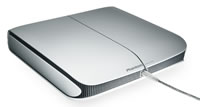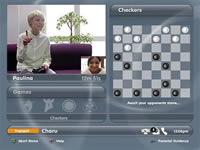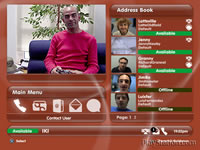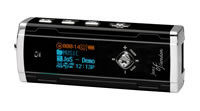Although picture messaging seems very popular with troops in Iraq at the moment, the service is yet to make any impact in the UK, says a survey by NOP.
Texting took a while to take off – but look what happened when it eventually did. Network providers are hoping for much the same thing – in fact, Sicap, who provide messaging products to mobile operators are rather hoping that Euro 2004 and the Olympic games will lure customers into MMS adoption.
There are two main reasons given for the lack of messaging: 45% don’t have a handset (kind of crucial, really – and also applies if your friends don’t have any either), and 17% don’t know how to send them. Odd then, that they would go to the expense of buying such a well-featured phone. But given that I still receive text messages THAT LOOK LIKE THIS, then it’s not surprising that people only have a limited amount of patience in learning how things work.
Indeed, on the rare occasions when I venture out, there seems to be little use of picture phones in real life situations. Phone users tend to take a few snaps when they first get their new phone, but after a while apathy, privacy infringement fears and the hail of tutting from those nearby soon dampen any enthusiasm for sending your mates a picture of the great time you’re pretending to have.
“The findings of our survey highlight that we will still have a lot more to do as an industry to encourage consumers to embrace MMS in the same way as they have SMS,” said Per-Johan Lundin, Head of Marketing, Sicap. “The first goal is to drive as many MMS compatible handsets into the hands of users as possible. Secondly, the services need to extremely user friendly like Vodafone Live. But the final piece of the jigsaw puzzle is compelling content. Some of this will be generated by users themselves but a lot will need to be generated around the content that consumers are really interested in like sports.”
If picture messaging is this slow in the UK, then you can bet it’s nowhere in the US, which tends to drag behind Europe in the mobile market.
 We have covered the on/off, is it real, is it vapour history of the Phantom Console a number of times.
We have covered the on/off, is it real, is it vapour history of the Phantom Console a number of times. Phantom Lapboard, which they claim gives easy control over the keyboard and mouse even when sitting on a couch.
Phantom Lapboard, which they claim gives easy control over the keyboard and mouse even when sitting on a couch. One important area for addressing your media within the home will be the ability to operate computer that is holding your hundreds of films, thousands of music tracks and endless media sources will be the remote control. Clearly you will not want to be forced to use a keyboard and mouse.
One important area for addressing your media within the home will be the ability to operate computer that is holding your hundreds of films, thousands of music tracks and endless media sources will be the remote control. Clearly you will not want to be forced to use a keyboard and mouse. Slowly and steadily, Sony is building on the usage and application of the ground-breaking EyeToy webcam add-on for their Playstation 2. The latest announcement is EyeToy:Chat, which expands the tool into a far more social area.
Slowly and steadily, Sony is building on the usage and application of the ground-breaking EyeToy webcam add-on for their Playstation 2. The latest announcement is EyeToy:Chat, which expands the tool into a far more social area. Clearly safety will be a big concern for parents and Sony’s London Studios, the original inventors of EyeToy, who developed Chat and have spent considerable efforts in trying to make the product as safe as possible. User will need to register with Playstation Net to use it and will only be bale to take part once they enter the PIN that is send to their home address. With Chat rooms being moderated and a clear processes for grievances Sony feels “‘EyeToy: Chat’ is one of the safest communication packages available on any system on the market.”
Clearly safety will be a big concern for parents and Sony’s London Studios, the original inventors of EyeToy, who developed Chat and have spent considerable efforts in trying to make the product as safe as possible. User will need to register with Playstation Net to use it and will only be bale to take part once they enter the PIN that is send to their home address. With Chat rooms being moderated and a clear processes for grievances Sony feels “‘EyeToy: Chat’ is one of the safest communication packages available on any system on the market.” The latest MP3 Flash-memory music player from Jens of Sweden has just been announced (so recently that they don’t have English details available). The stylish devices has all you would expect from a mini-MP3 player, currently up to 512Mb of storage, record function dictaphone and FM-radio. Amazingly this little beauty weighs the same as eight sheets of A4 paper.
The latest MP3 Flash-memory music player from Jens of Sweden has just been announced (so recently that they don’t have English details available). The stylish devices has all you would expect from a mini-MP3 player, currently up to 512Mb of storage, record function dictaphone and FM-radio. Amazingly this little beauty weighs the same as eight sheets of A4 paper.